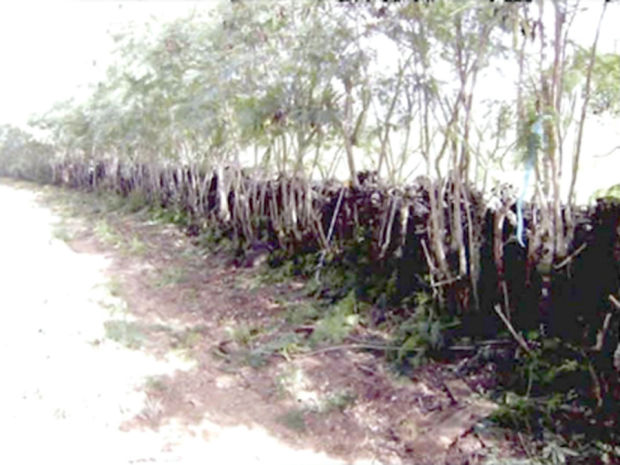LIHU‘E — The State Supreme Court of Hawai‘i will hear arguments today on a two-year-old case involving the destruction of historic sites along the Hapa Trail access in Koloa. The State Intermediary Court upheld a 5th Circuit decision in the
LIHU‘E — The State Supreme Court of Hawai‘i will hear arguments today on a two-year-old case involving the destruction of historic sites along the Hapa Trail access in Koloa.
The State Intermediary Court upheld a 5th Circuit decision in the case Theodore Blake vs. the County of Kaua‘i and County Planning Commission in December 2010.
Blake is challenging a circuit court decision that allowed significant historic sites in Koloa to be damaged or threatened with further alteration, including the publicly-owned Hapa Trail, walls and on adjacent land owned by the Eric A. Knudsen Trust.
“This case highlights another unfortunate breakdown in the historic review process and other laws intended to protect the rich historic and cultural heritage of the state,” said attorney David Frankel of the Native Hawaiian Legal Corporation, who will argue the case before the Supreme Court on behalf of Blake. “It is one hope that the vitality is breathed back into our laws that are supposed to protect our heritage.”
Blake, described as a caretaker, is making his case based on a 1991 archaeological data recovery and preservation plan that referred to the Hapa Trail as “the most well-preserved agricultural/habitation complexes which best represent former Hawaiian use of the land.” The extensive irrigated field complex known as the Koloa Field System is considered rare and unique in other studies, he said.
The land was not to be graded, grubbed, bulldozed or in any way destroyed unless in accordance with a plan, he said. Yet, approximately 18 documented archaeological sites on Knudsen’s land in Koloa have been destroyed or disappeared without any government authorization.
The suit partially blames the planning commission for granting a final subdivision approval before verifying that protective measures were implemented prior to State Historic Preservation Division concurrence that the project could be approved.
The county admits that it did not know if the fieldwork was completed, Frankel said. Instead, the planning department relied on SHPD regarding historic preservation that were never reviewed, he said.
As of now, the infrastructure for development is in place but no homes have been built yet.
Frankel said there is a lot of responsibility to go around, from the developer to the county and the state historical division. He would hope the case would be resolved and the restoration of the trail could continue with permanent protection of several historical sites.
“A lot of things fell through the gaps and there is a lot of finger pointing going one,” Frankel said. “We are appealing to the court to decide the case on its merits.”
In January 2004, the planning commission granted tentative subdivision approval to the Knudsen Trust Lands Phase I Portion of the Village at Po‘ipu Project, with conditions that included SHPD approval of mitigation plans to protect significant historic sites.
The protection plan identified 30 significant historic sites, including the Hapa Trail, and called for a marked buffers and fencing at a minimum of 50 feet, according to the SHPD report.
Construction resulted with the breach of two wall portions of the Hapa Trail in 2008 and 2009. A portion was rebuilt while construction continued within 50 feet in another area, Frankel said. Knudsen sought authorization to remove another portion of protected wall, he said.
Frankel said the planning commission’s final subdivision approval was given without the benefit of a supplemental EIS or environmental assessment that described the destruction of a portion of the Hapa Trail wall, its impacts or the alternatives. After the county granted final subdivision approval, Knudsen commenced construction of its project with an archaeological and biological survey that reportedly failed to include essential State Historic Preservation information.
The documents show that the development assumed incorrectly that Hapa Trail was county-owned, Frankel said. A title search showed that it is owned by the state of Hawai‘i and that makes a big difference legally and all parties agreed to that in court.
The 5th Circuit case was filed in July 2009, and Chief Judge Randal Valenciano ruled on Dec. 7, 2010, that Hapa trail is state-owned land, and that there was no final agency action. He said the 5th Circuit did not have subject matter jurisdiction as to all counts.
The Intermediate Court upheld the decision by saying the case was not ripe, which Frankel said meant that they were told they sued too early and should have waited for the state to make a decision on the status of the trail.
Because the county had cleared development and construction had begun, Frankel said they had no choice but to file suit.
The Intermediate Court of appeals upheld the 5th Circuit decision that the court decided the HAPA Road is a state-owned land, and that there was no final agency action.
Attorney Ian Kawika Murray Jung will present arguments for the County of Kaua‘i. He did not return calls by press time.
The Office of the Kaua‘i County Attorney said in statement Wednesday that the issues relative to the sufficiency of the environmental impact statement, cultural impact assessment and archeological studies regarding the Village at Po‘ipu phase one project are now in the hands of the Hawai‘i Supreme Court.


